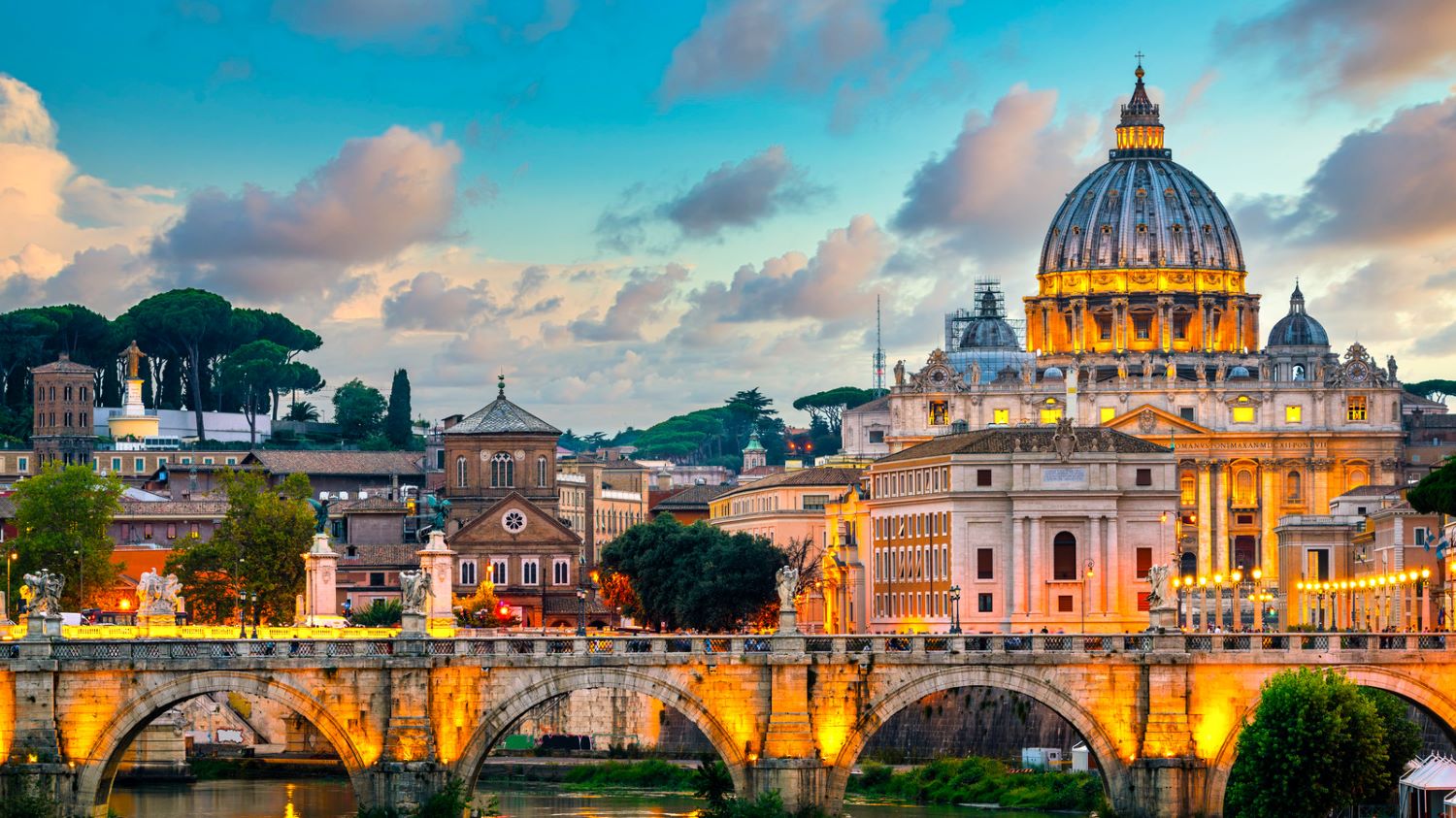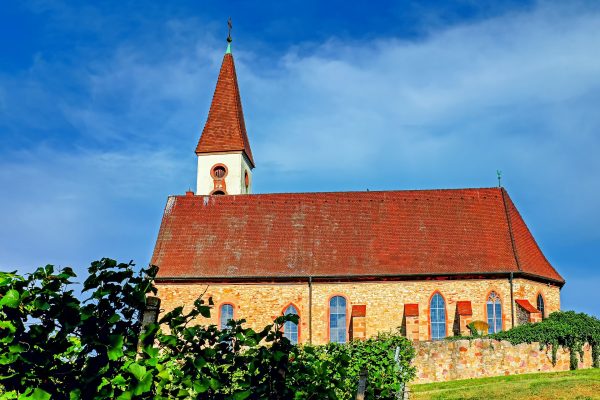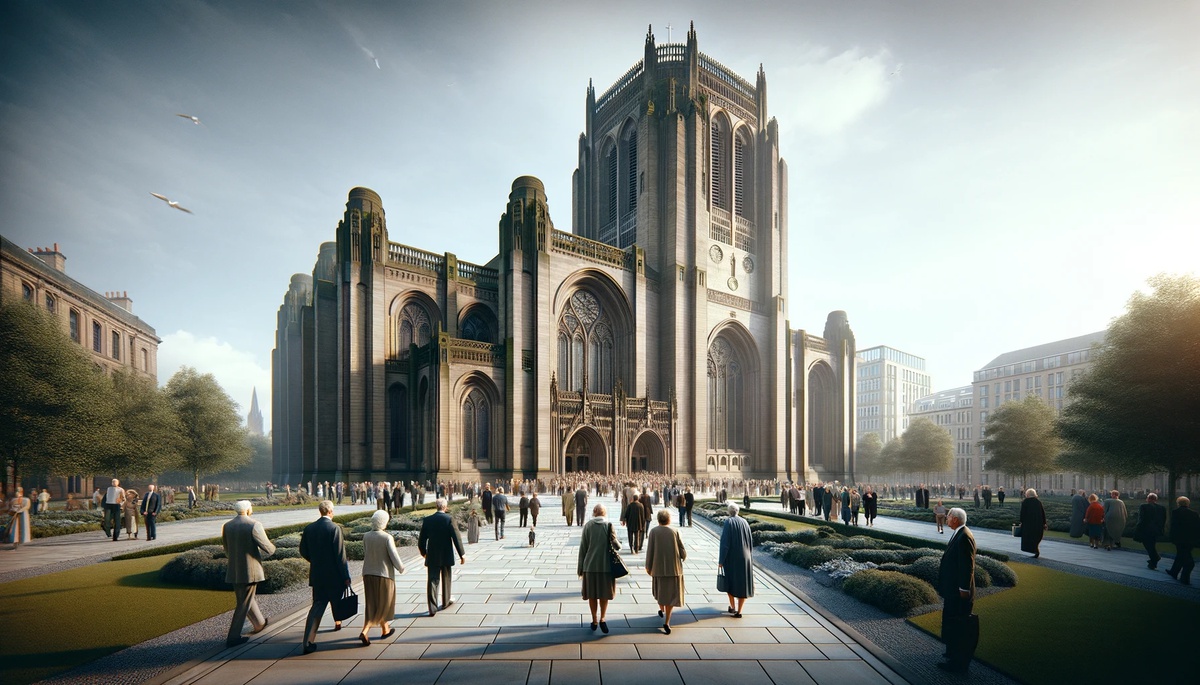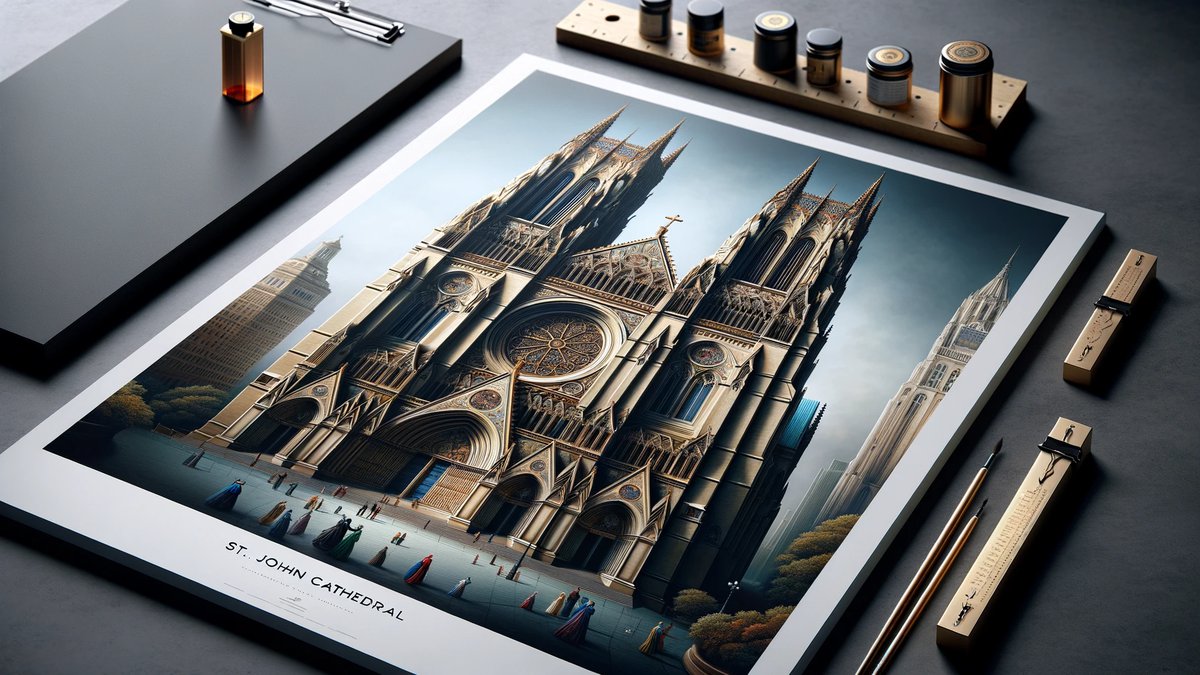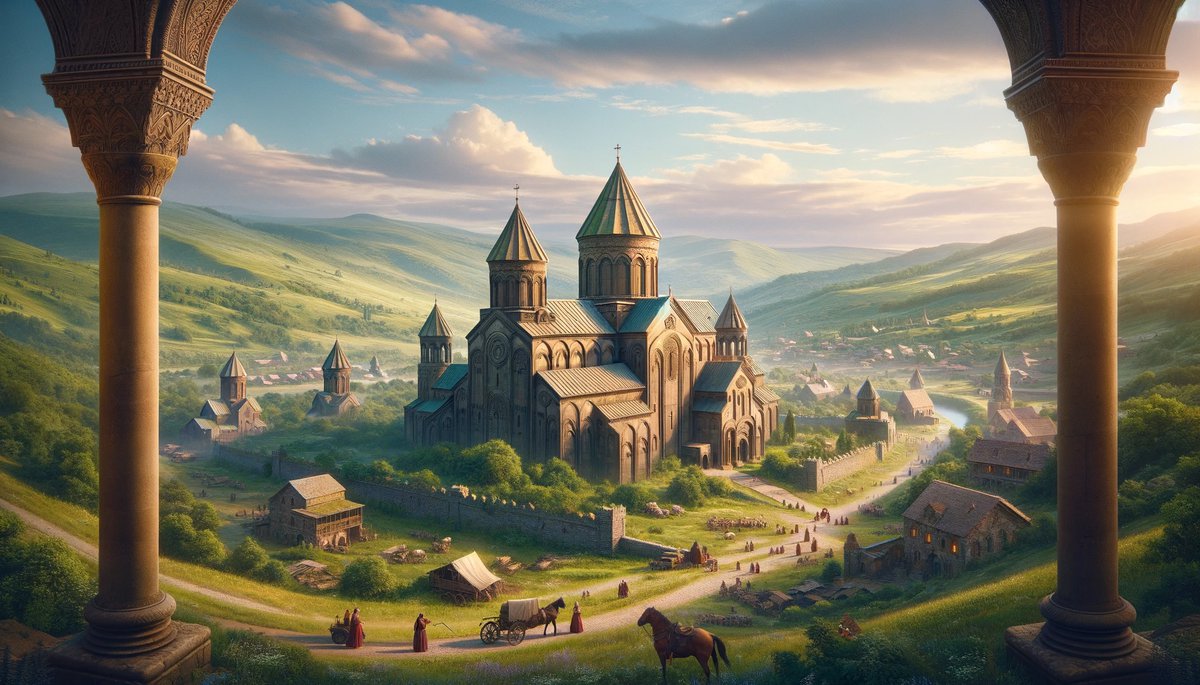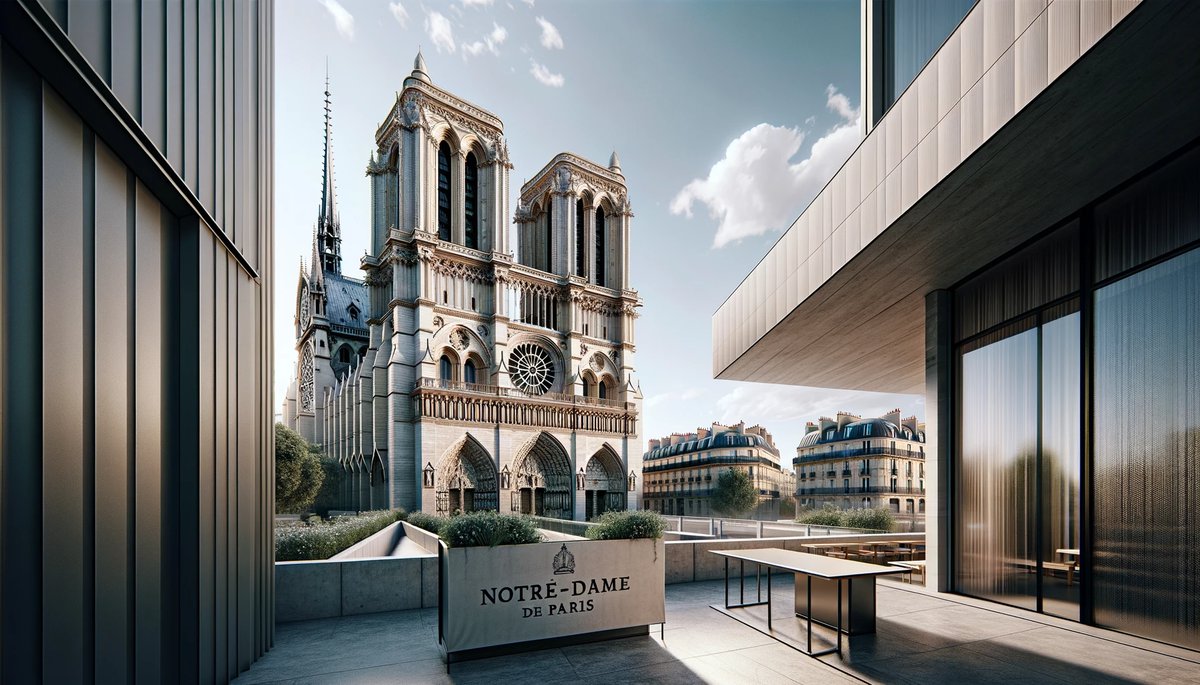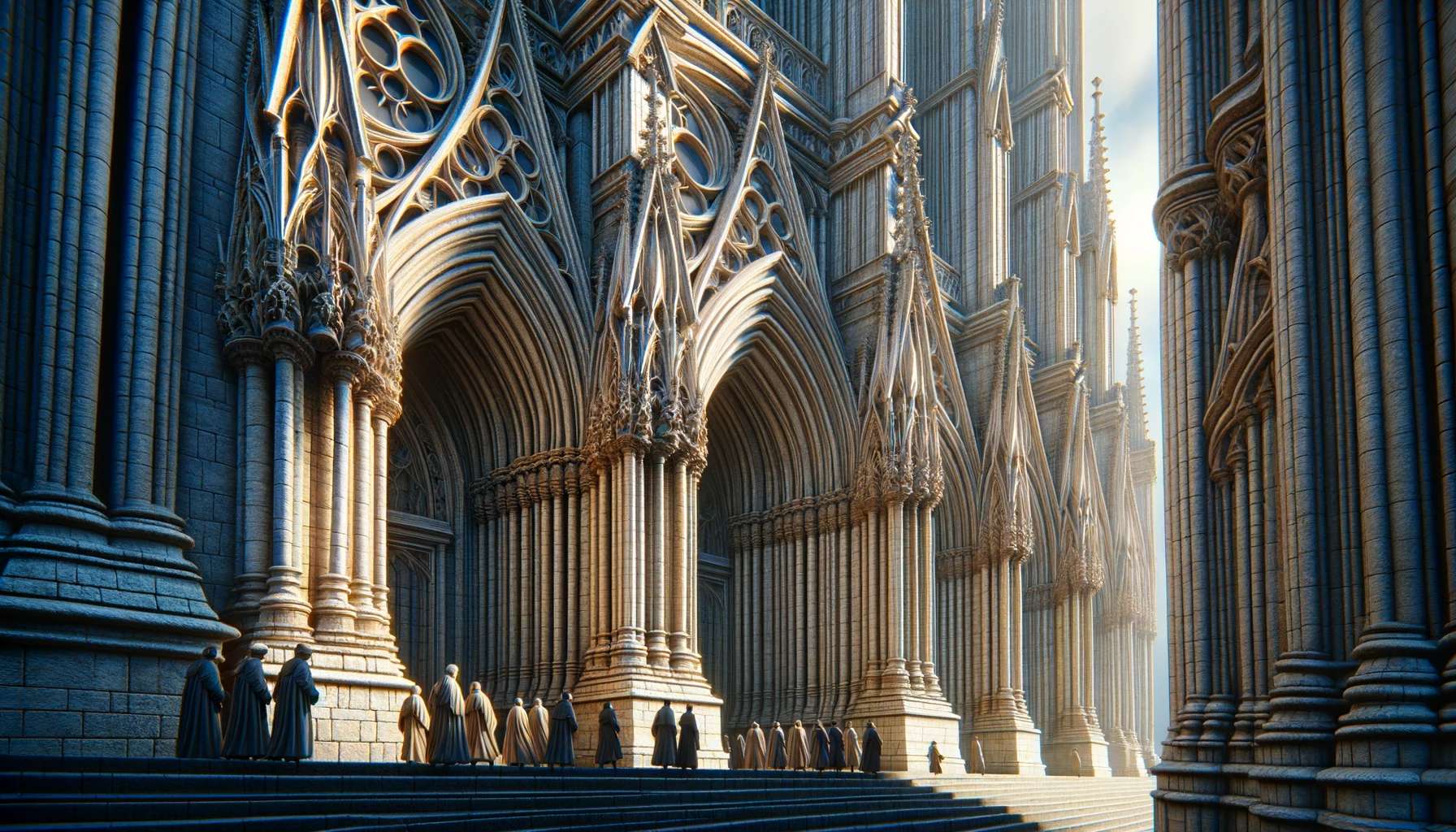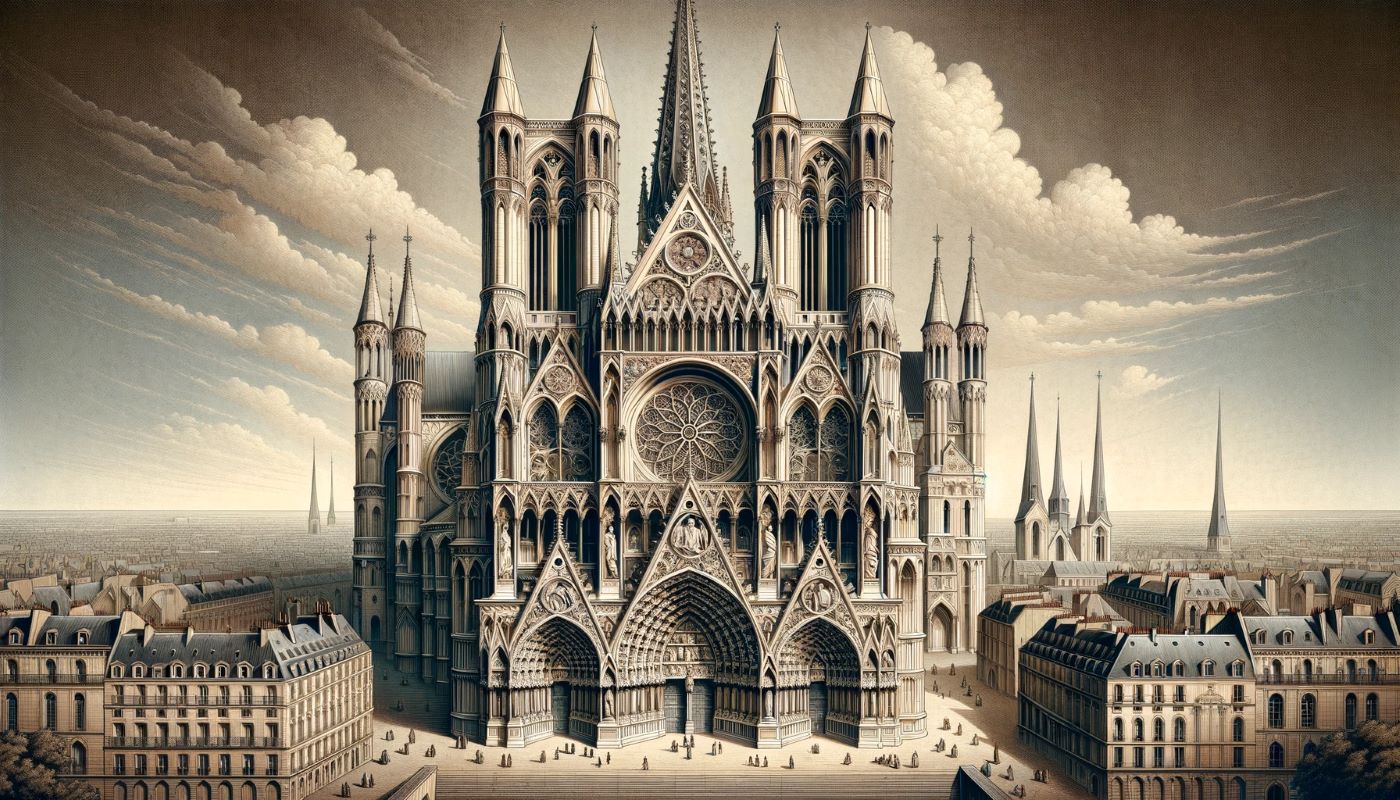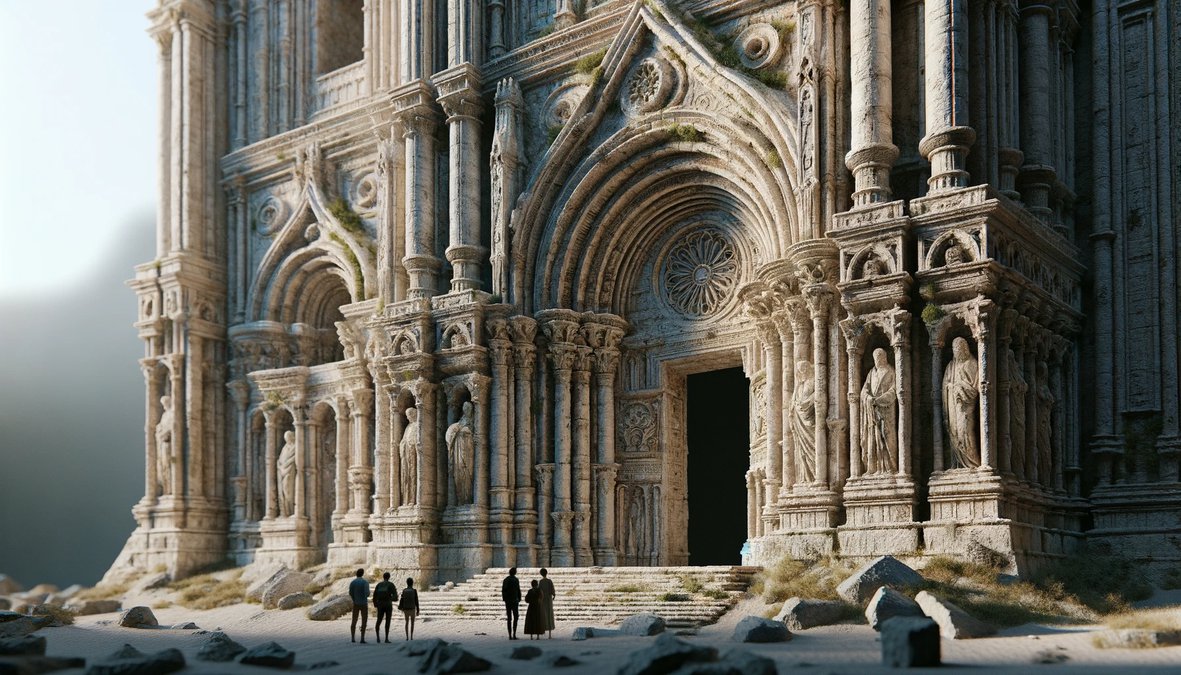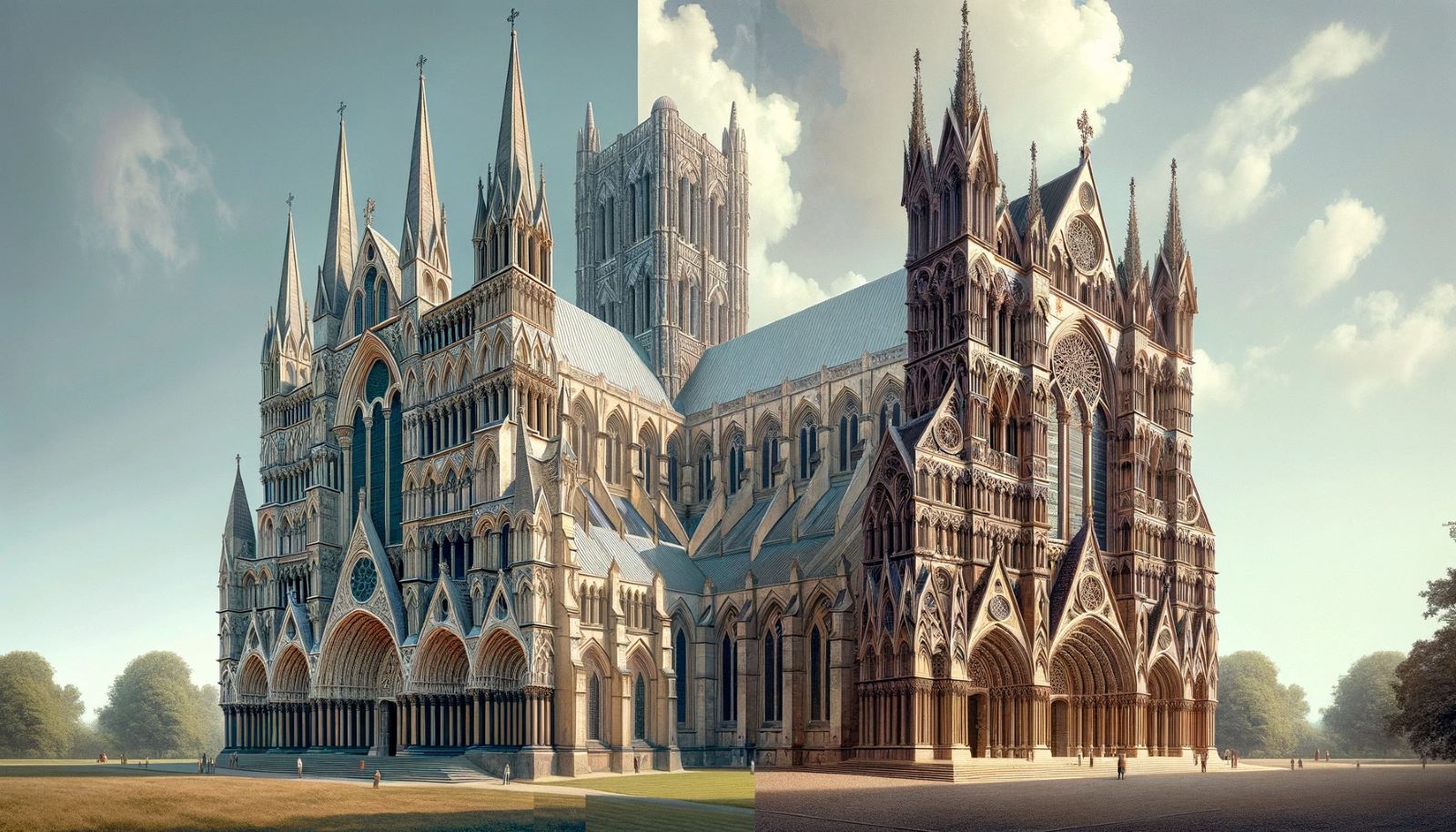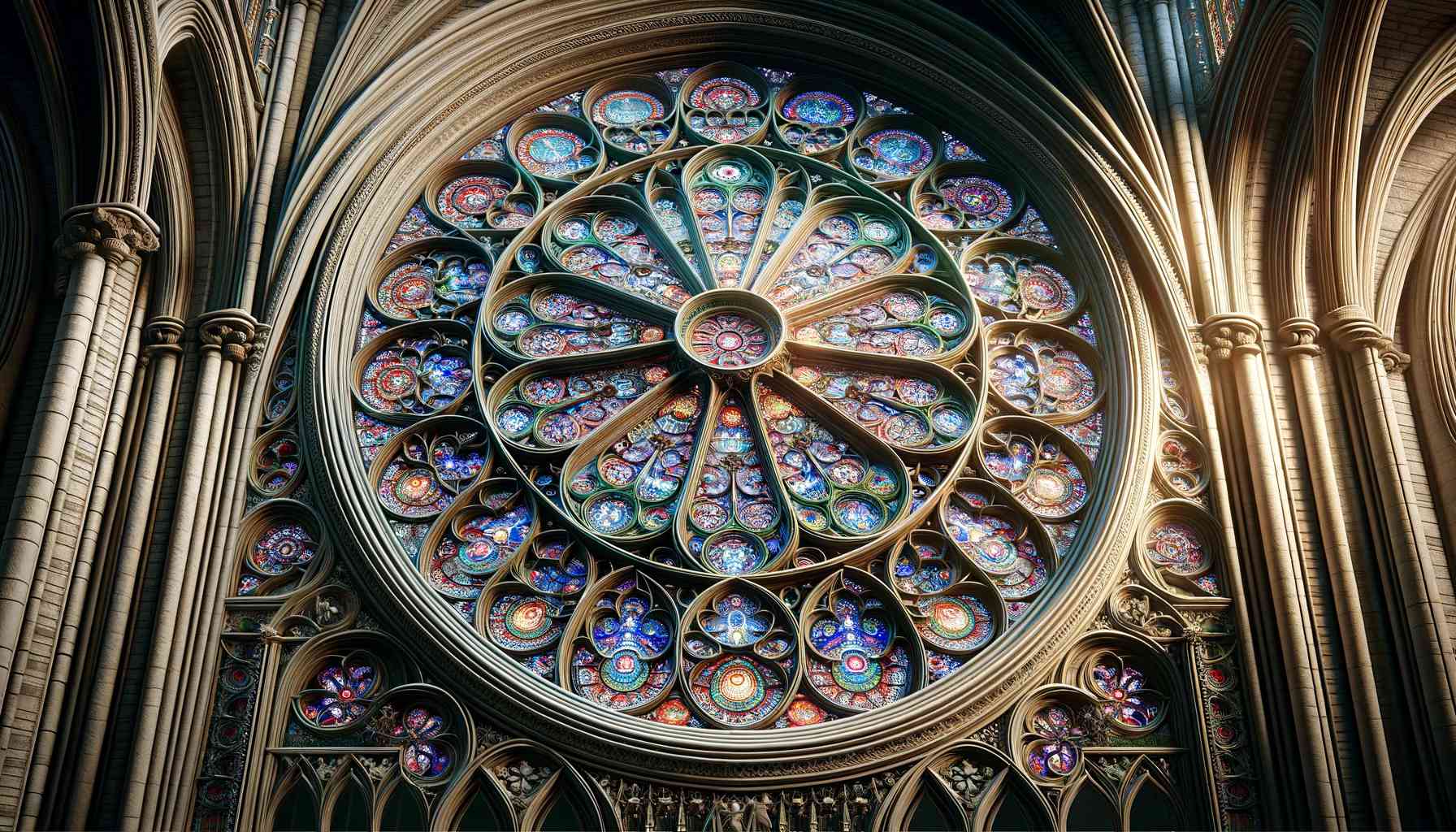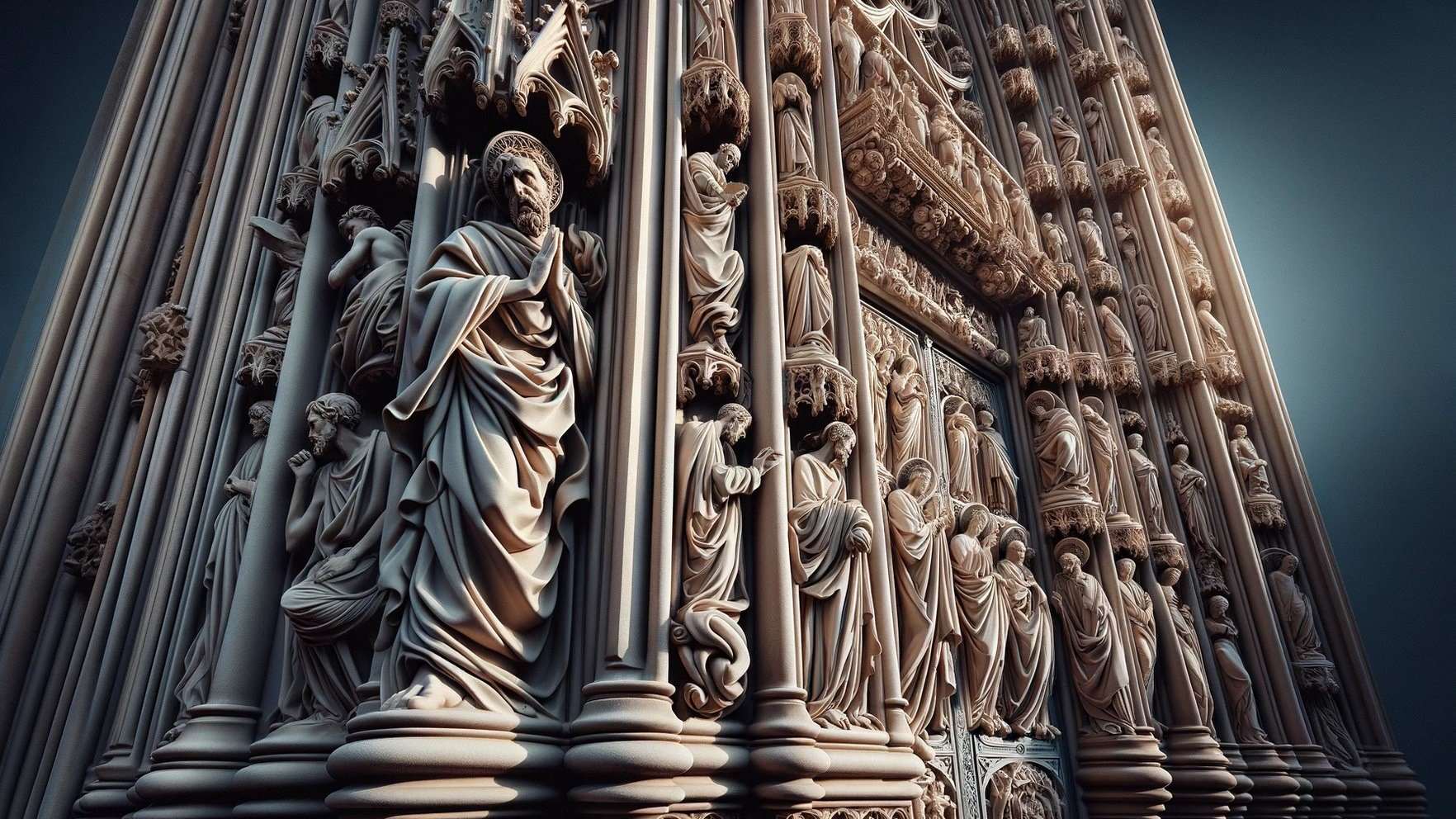Home>Arts and Culture>What Is The Largest Gothic Cathedral In The World


Arts and Culture
What Is The Largest Gothic Cathedral In The World
Published: February 16, 2024
Peter Smith, Editorial Director at Christian.net, combines deep insights into faith, politics, and culture to lead content creation that resonates widely. Awarded for his contributions to religious discourse, he previously headed a major organization for religious communicators, enhancing dialogue on faith's societal impacts.
Discover the largest Gothic cathedral in the world and explore its rich history and cultural significance. Uncover the beauty of arts and culture in this architectural masterpiece.
(Many of the links in this article redirect to a specific reviewed product. Your purchase of these products through affiliate links helps to generate commission for Christian.net, at no extra cost. Learn more)
Table of Contents
Introduction
Gothic cathedrals stand as timeless marvels of human ingenuity and artistic expression. These architectural wonders have captivated the imagination of people for centuries, serving as testaments to the skill and vision of the craftsmen and artisans who brought them to life. From the intricate details of their facades to the awe-inspiring heights of their spires, Gothic cathedrals continue to inspire wonder and admiration.
The term "Gothic" may evoke images of darkness and mystery, but in the realm of architecture, it represents a period of innovation and grandeur. The Gothic style emerged in the High Middle Ages, characterized by its soaring structures, pointed arches, ribbed vaults, and elaborate ornamentation. This architectural movement not only transformed the skylines of medieval cities but also left an indelible mark on the history of art and construction.
As we delve into the world of Gothic cathedrals, we embark on a journey through time, exploring the cultural, religious, and artistic forces that shaped these monumental edifices. From the bustling streets of medieval Europe to the tranquil interiors of these sacred spaces, the story of Gothic cathedrals unfolds like a tapestry of human achievement and aspiration.
In this article, we will unravel the history, characteristics, and significance of Gothic architecture, shedding light on the largest Gothic cathedral in the world. Through this exploration, we aim to gain a deeper appreciation for the craftsmanship and creativity that have left an indelible mark on the architectural landscape. Join us as we embark on a captivating odyssey through the realms of stone, light, and faith, where the grandeur of the Gothic cathedral awaits.
Read more: What Is The Largest Cathedral In The World
History of Gothic Cathedrals
The history of Gothic cathedrals is a captivating saga that unfolds against the backdrop of medieval Europe. The roots of this architectural marvel can be traced back to the 12th century, a time of profound cultural and artistic transformation. As the Romanesque style, with its thick walls and small windows, gave way to a new wave of architectural innovation, the Gothic style emerged as a revolutionary force in the realm of construction.
The birth of the Gothic cathedral can be attributed to the visionary endeavors of skilled craftsmen, architects, and masons who sought to transcend the limitations of their predecessors. One of the defining features of Gothic architecture is its verticality, a departure from the predominantly horizontal emphasis of Romanesque structures. This shift towards soaring heights and expansive interiors was made possible by advancements in engineering and design, allowing for the construction of towering spires and expansive stained glass windows.
The development of the Gothic style was closely intertwined with the rise of medieval Christianity and the burgeoning influence of the Church. Cathedrals, as the seat of bishops and symbols of religious authority, became the focal points of architectural innovation and artistic expression. The construction of these monumental edifices was not merely an exercise in engineering prowess; it was a testament to the spiritual and cultural aspirations of the communities that commissioned them.
One of the most iconic examples of early Gothic architecture is the Basilica of Saint-Denis in France, often regarded as the first true Gothic building. Its innovative use of ribbed vaults, pointed arches, and flying buttresses set the stage for a new era of architectural achievement. From France, the Gothic style spread across Europe, giving rise to a multitude of awe-inspiring cathedrals that continue to inspire wonder and admiration to this day.
The evolution of Gothic cathedrals mirrored the dynamic shifts in medieval society, reflecting the interplay of faith, art, and technological progress. As the centuries unfolded, Gothic architecture continued to evolve, embracing regional variations and incorporating diverse influences. The legacy of these magnificent structures endures as a testament to the enduring power of human creativity and the timeless allure of architectural beauty.
Characteristics of Gothic Architecture
Gothic architecture is renowned for its distinctive features that set it apart from preceding styles and define its timeless allure. From the soaring heights of its spires to the intricate tracery of its windows, Gothic architecture embodies a harmonious blend of structural innovation and artistic expression. Here are the key characteristics that define this iconic architectural style:
-
Vertical Emphasis: Gothic architecture is characterized by its verticality, with soaring spires and towering ceilings that seem to reach for the heavens. This emphasis on height creates a sense of upliftment and spiritual aspiration, inviting visitors to gaze skyward in awe.
-
Pointed Arches: One of the hallmark features of Gothic architecture is the extensive use of pointed arches. These arches not only lend a sense of verticality to the structures but also distribute weight more efficiently, allowing for the creation of taller and more expansive spaces.
-
Ribbed Vaults: Gothic cathedrals often feature ribbed vaults, which are intersecting arches that form a structural framework for the ceilings. These vaults not only provide structural support but also contribute to the aesthetic grandeur of the interiors.
-
Flying Buttresses: A defining innovation of Gothic architecture, flying buttresses are exterior supports that transfer the lateral thrust of the vaults, allowing for the creation of expansive windows and reducing the need for thick, solid walls.
-
Stained Glass Windows: Gothic cathedrals are renowned for their exquisite stained glass windows, which fill the interiors with a kaleidoscope of colored light. These windows serve as both decorative elements and vehicles for conveying religious narratives and symbolism.
-
Gothic Tracery: The delicate tracery of Gothic windows, characterized by intricate stone mullions and filigree-like patterns, adds a sense of ethereal beauty to the interiors, creating a mesmerizing play of light and shadow.
-
Ornate Decoration: From elaborate carvings to sculpted gargoyles and grotesques, Gothic architecture is adorned with a wealth of decorative elements that reflect the craftsmanship and artistry of the era.
-
Symbolism and Narrative: The architectural elements of Gothic cathedrals often convey religious symbolism and narratives, serving as visual expressions of faith and spirituality.
These characteristics collectively contribute to the enduring allure of Gothic architecture, inviting visitors to immerse themselves in a world of transcendent beauty and spiritual contemplation.
The Largest Gothic Cathedral in the World
The title of the largest Gothic cathedral in the world is a prestigious accolade held by the magnificent Cathedral of Seville, also known as the Catedral de Santa María de la Sede. Located in the heart of Seville, Spain, this awe-inspiring edifice stands as a testament to the grandeur and architectural prowess of the Gothic era. Its colossal dimensions and intricate design make it a crowning jewel of Gothic architecture, drawing visitors from around the globe to marvel at its splendor.
The construction of the Cathedral of Seville commenced in the early 15th century on the site of a former mosque, reflecting the cultural and religious transitions of the era. The cathedral's sheer size is a testament to the ambitious vision of its creators, as it boasts the title of the largest Gothic cathedral and the third-largest church in the world. Its imposing dimensions encompass a total area of 11,520 square meters, with a length of 126 meters, a width of 83 meters, and a height of 37 meters at the main nave.
The cathedral's exterior is adorned with intricate carvings, ornate spires, and imposing buttresses, creating a striking silhouette against the Spanish sky. Its iconic bell tower, known as La Giralda, stands as a symbol of Seville's rich history, blending elements of Islamic and Christian architecture in a harmonious fusion. The interior of the cathedral is a marvel of artistic expression, with soaring vaulted ceilings, elaborate altarpieces, and a profusion of stained glass windows that suffuse the space with a kaleidoscope of colored light.
One of the most captivating features of the Cathedral of Seville is its breathtaking central nave, which rises to a height of 42 meters, creating a sense of awe and reverence for visitors who stand within its hallowed halls. The intricate tracery of the windows, the delicate ribbed vaults, and the ornate decorations bear testament to the skill and dedication of the artisans who brought this monumental vision to life.
The cathedral's significance extends beyond its architectural magnificence, serving as a repository of artistic treasures and religious relics. Its chapels house a wealth of masterful artworks, including paintings by renowned artists such as Murillo and Zurbarán, enriching the cultural tapestry of the cathedral.
The Cathedral of Seville stands as a living testament to the enduring legacy of Gothic architecture, inviting visitors to immerse themselves in a world of transcendent beauty and historical significance. Its monumental presence and rich artistic heritage make it a must-see destination for enthusiasts of art, history, and architecture, offering a profound glimpse into the heights of human creativity and spiritual aspiration.
Construction and Design of the Cathedral
The construction and design of the Cathedral of Seville represent a monumental feat of architectural ambition and artistic ingenuity. The cathedral's inception can be traced back to the aftermath of the Reconquista, the period when Christian forces reclaimed the Iberian Peninsula from Islamic rule. In 1401, following the demolition of the former mosque on the site, the construction of the cathedral began under the guidance of master architect Alonso Martínez.
The cathedral's design reflects the prevailing aesthetic sensibilities of the era, blending elements of Gothic, Mudejar, and Renaissance styles to create a harmonious and awe-inspiring edifice. The fusion of these diverse influences imbues the cathedral with a unique character, capturing the cultural and historical transitions of the time.
The sheer scale of the cathedral's design is a testament to the grand ambitions of its creators. The structure's vast dimensions encompass a total area of 11,520 square meters, making it one of the largest cathedrals in the world. The expansive interior, with its soaring vaulted ceilings and labyrinthine chapels, reflects the meticulous planning and engineering prowess required to bring such a vision to fruition.
The cathedral's exterior is adorned with a profusion of ornate details, from intricately carved stone reliefs to imposing buttresses that lend a sense of grandeur to the facade. The iconic bell tower, La Giralda, stands as a testament to the cathedral's multicultural heritage, featuring a striking blend of Islamic and Christian architectural elements. Originally constructed as a minaret for the mosque, it was later repurposed as a bell tower, symbolizing the enduring legacy of the region's diverse cultural influences.
The interior of the cathedral is a symphony of artistic expression, with a wealth of masterful adornments that captivate the senses. The central nave, rising to a height of 42 meters, creates a profound sense of awe and reverence, inviting visitors to gaze skyward in wonder. The intricate tracery of the stained glass windows, the delicate ribbed vaults, and the ornate altarpieces collectively embody the pinnacle of Gothic craftsmanship, showcasing the skill and dedication of the artisans who brought this monumental vision to life.
The construction and design of the Cathedral of Seville stand as a testament to the enduring legacy of human creativity and architectural achievement. Its monumental presence and rich artistic heritage continue to inspire awe and admiration, inviting visitors to embark on a captivating journey through the annals of history and artistic expression.
Notable Features of the Cathedral
The Cathedral of Seville, renowned as the largest Gothic cathedral in the world, boasts a myriad of notable features that captivate the imagination and inspire awe. From its monumental dimensions to its exquisite artistic adornments, the cathedral stands as a testament to the grandeur of Gothic architecture and the enduring legacy of human creativity.
One of the most striking features of the cathedral is its colossal scale, encompassing a total area of 11,520 square meters. The sheer magnitude of the structure, with a length of 126 meters and a width of 83 meters, reflects the ambitious vision of its creators and the meticulous craftsmanship required to bring such a monumental edifice to life. The cathedral's soaring height, with the central nave reaching 42 meters, creates a profound sense of verticality and spiritual aspiration, inviting visitors to gaze skyward in wonder.
The exterior of the cathedral is adorned with a wealth of intricate details, including ornate carvings, imposing buttresses, and the iconic bell tower, La Giralda. This bell tower, originally constructed as a minaret for the former mosque, stands as a testament to the cathedral's multicultural heritage, blending elements of Islamic and Christian architecture in a harmonious fusion. The intricate tracery of the stained glass windows, the delicate ribbed vaults, and the profusion of decorative elements collectively embody the pinnacle of Gothic craftsmanship, showcasing the skill and dedication of the artisans who brought this monumental vision to life.
The interior of the cathedral is a treasure trove of artistic expression, housing a wealth of masterful adornments that enrich the cultural tapestry of the space. The chapels of the cathedral feature exquisite altarpieces, including works by renowned artists such as Murillo and Zurbarán, adding a layer of artistic splendor to the sacred surroundings. The intricate tracery of the stained glass windows suffuses the interior with a kaleidoscope of colored light, creating an ethereal ambiance that invites contemplation and reverence.
The Cathedral of Seville stands as a living testament to the enduring legacy of Gothic architecture, inviting visitors to immerse themselves in a world of transcendent beauty and historical significance. Its monumental presence and rich artistic heritage make it a must-see destination for enthusiasts of art, history, and architecture, offering a profound glimpse into the heights of human creativity and spiritual aspiration.
Importance and Influence of the Cathedral
The Cathedral of Seville, as the largest Gothic cathedral in the world, holds profound importance and exerts a far-reaching influence that transcends its architectural magnificence. Its significance extends beyond its physical dimensions, encompassing cultural, historical, and spiritual realms that continue to resonate with visitors and scholars alike.
From a historical perspective, the Cathedral of Seville stands as a tangible testament to the cultural transitions and religious transformations that shaped the Iberian Peninsula. Its construction on the site of a former mosque symbolizes the interplay of Islamic and Christian influences, reflecting the complex tapestry of the region's multicultural heritage. The cathedral's iconic bell tower, La Giralda, with its fusion of Islamic and Christian architectural elements, serves as a poignant reminder of the enduring legacy of diverse cultural exchanges.
In the realm of art and architecture, the Cathedral of Seville exerts a profound influence as a pinnacle of Gothic craftsmanship and artistic expression. Its soaring vaulted ceilings, intricate tracery of stained glass windows, and profusion of decorative elements serve as a wellspring of inspiration for artists, architects, and aficionados of architectural beauty. The cathedral's chapels, adorned with masterful altarpieces and religious artworks, enrich the cultural landscape, offering a glimpse into the artistic splendor of the era.
Spiritually, the cathedral holds immense significance as a sacred space that has provided solace, inspiration, and a sense of awe for countless visitors over the centuries. Its hallowed halls, suffused with the ethereal glow of stained glass and resonant with the echoes of history, invite contemplation and reverence, fostering a profound connection to the spiritual aspirations of the past.
The influence of the Cathedral of Seville extends beyond its physical boundaries, permeating the realms of literature, art, and cultural discourse. Its monumental presence has inspired countless works of creative expression, serving as a muse for poets, painters, and storytellers who seek to capture the essence of its grandeur.
In essence, the Cathedral of Seville stands as a living testament to the enduring power of human creativity, cultural exchange, and spiritual aspiration. Its importance and influence reverberate through the annals of history, inviting visitors to embark on a captivating journey through the realms of art, faith, and architectural splendor.
Conclusion
In conclusion, the Cathedral of Seville stands as a timeless testament to the grandeur and enduring legacy of Gothic architecture. As the largest Gothic cathedral in the world, it embodies the pinnacle of human creativity, engineering prowess, and artistic expression. From its colossal dimensions to its intricate adornments, the cathedral captivates the imagination and invites visitors to embark on a journey through the annals of history, art, and spirituality.
The significance of the Cathedral of Seville extends far beyond its physical presence, encompassing cultural, historical, and spiritual realms that continue to resonate with visitors and scholars alike. Its construction on the site of a former mosque reflects the interplay of Islamic and Christian influences, serving as a poignant symbol of the region's multicultural heritage. The cathedral's architectural splendor and artistic adornments enrich the cultural landscape, offering a profound glimpse into the artistic achievements of the era.
Spiritually, the cathedral serves as a sacred space that has provided solace, inspiration, and a sense of awe for countless visitors over the centuries. Its soaring vaulted ceilings, intricate stained glass windows, and masterful altarpieces create an ambiance of transcendence, fostering a profound connection to the spiritual aspirations of the past.
The Cathedral of Seville continues to exert a far-reaching influence, permeating the realms of literature, art, and cultural discourse. Its monumental presence has inspired countless works of creative expression, serving as a muse for artists, architects, and storytellers who seek to capture the essence of its grandeur.
In essence, the Cathedral of Seville stands as a living testament to the enduring power of human creativity, cultural exchange, and spiritual aspiration. Its monumental presence and rich artistic heritage make it a must-see destination for enthusiasts of art, history, and architecture, offering a profound glimpse into the heights of human achievement and the enduring allure of Gothic architecture.
